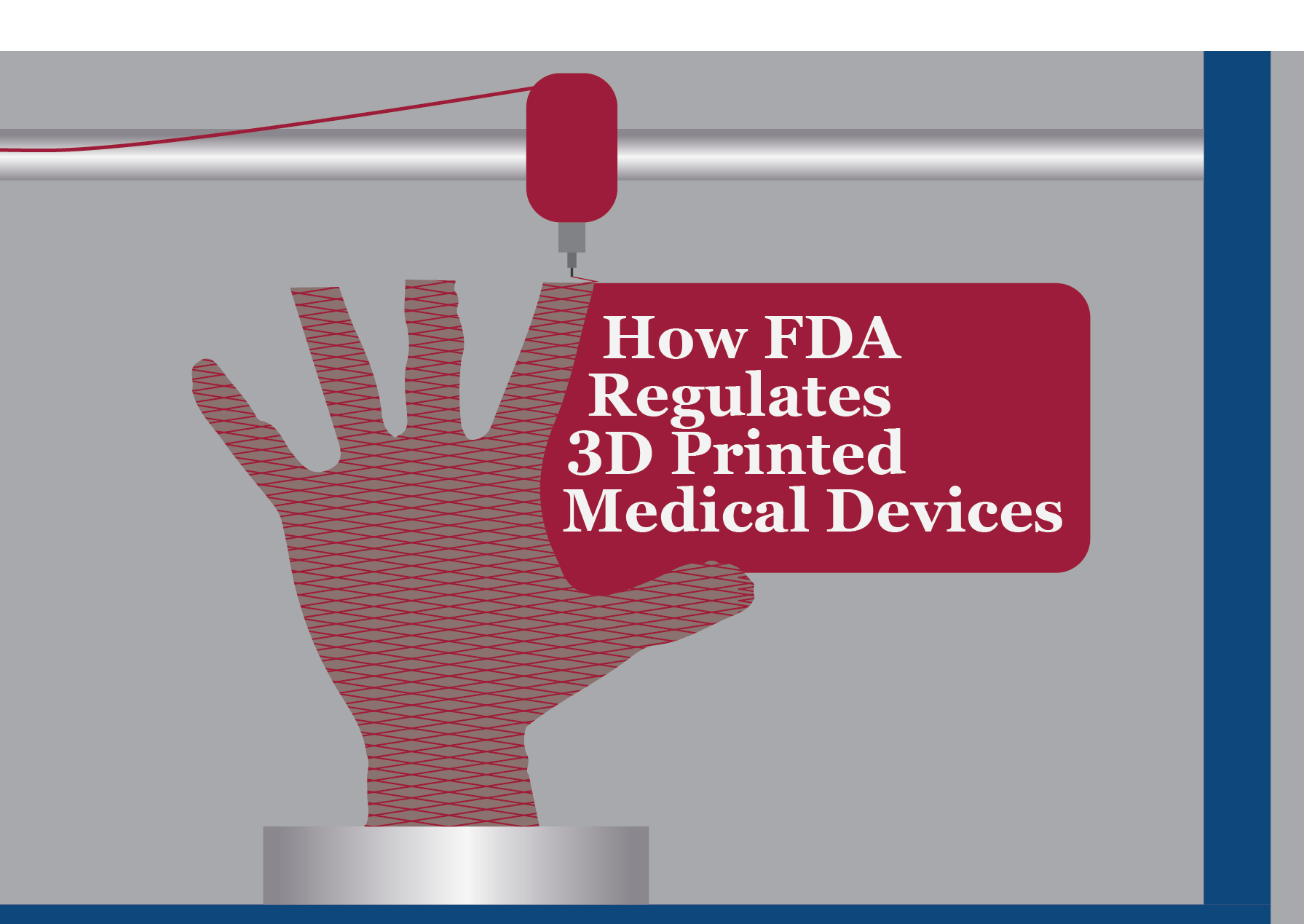3D printing has a multitude of applications in the medical device field. Right from the inception of the additive manufacturing technique, engineers have been working on how this technology can serve the health care industry. Additive manufacturing has the capability to manufacture devices that match the patient-specific anatomy using the medical images of the patients. FDA calls these devices patient-matched devices.
If you are a medical device manufacturer and if you are thinking about manufacturing a 3D printed medical device, this blog will help you understand how FDA regulates 3D printed devices and how you can be prepared for it. FDA released a guidance document in Dec 2017 titled ‘Technical Considerations for Additive Manufactured Medical Devices’.
The guidance provides information on the design and manufacturing considerations for the manufacturers as well as device testing, material, and quality system requirements. Depending on the type of the additive manufacturing process you follow, the specific material requirements will be applicable.
FDA anticipates that devices manufactured using the additive manufacturing technique will follow the same regulatory requirements and submission expectations as the classification and/or regulation to which a device manufactured by non-additive manufacturing technique of the same type is produced.
For Patient matched devices, these devices are based on a standard sized template or may be produced within a defined design or performance envelope. According to the FDA, most patient-matched devices will fall within the existing regulatory pathway for that particular type of device.
FDA expects the following information in the pre-market submission of a 3D printed medical device:1
Device Description: Since 3D printed devices do not have discrete device sizes, especially in cases of the patient-matched device, FDA recommends identifying a range of device sizes along with the additive manufacturing techniques used to produce that device. FDA also recommends describing and identifying the critical features of the device in the technical drawings.
Mechanical Testing Performed: A device manufactured using the additive manufacturing technique will have to undergo similar performance testing as a device manufactured by traditional methods according to the FDA. However, not all testing requirements will vary depending on the type of additive manufacturing process used.
Dimensional Measurements: FDA recommends to the manufacturers to specify the dimensional tolerances and measurements for the worst-case manufactured device. Measurements should be taken from samples from multiple build cycles and an appropriate sampling scheme should be applied.
Material Characterization: Additive manufacturing technologies have a tendency to modify or alter the starting material. Hence, FDA recommends identification of all the physical and the chemical properties of the manufacturing material. Especially, in case of Polymers, where the chemistry can be altered which can result in the undesired formation of chemical entities, which can adversely affect the biocompatibility of the material.
Removing Manufacturing Material Residues and Sterilization: Because of the versatile nature of additive manufacturing to allow for the creation of porous structures and cavities, it can increase the difficulty in removing the material residues. FDA recommends validating the residue removal process for the worst-case condition (greatest amount of residue), which is capable of reducing the residue to levels that do not adversely affect the quality, performance and sterilization process of the device.
Biocompatibility: FDA recommends evaluating the biocompatibility of the finished device in accordance with the guidance: “Use of International Standard ISO-10993, “Biological Evaluation of Medical Devices Part 1: Evaluation and Testing within a Risk Management Process.”
Still have questions? Give us a call at 248-987-4497 or email us at info@emmainternational.com.
1FDA (Dec 2017) Technical Considerations for Additive Manufactured Medical Devices retrieved on 03/18/2019 from https://www.fda.gov/downloads/MedicalDevices/DeviceRegulationandGuidance/GuidanceDocuments/UCM499809.pdf






